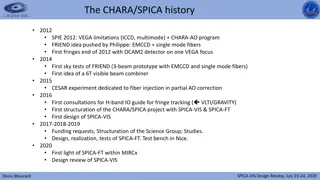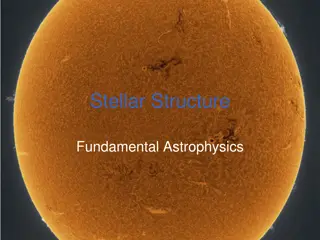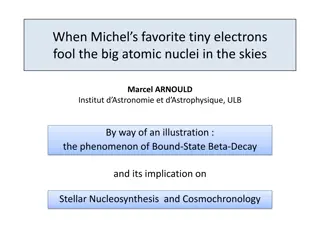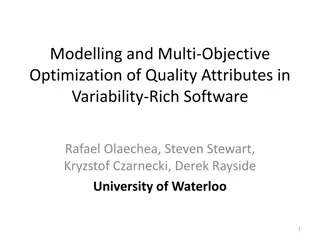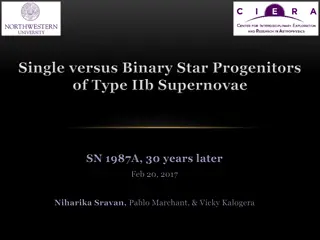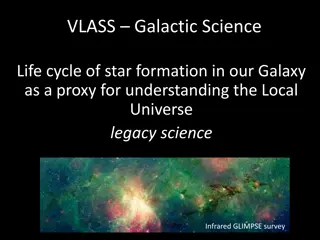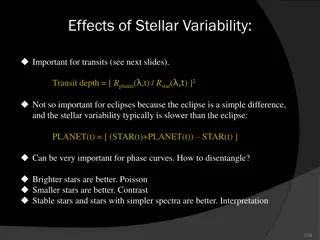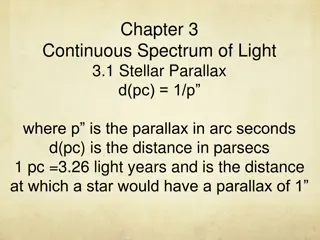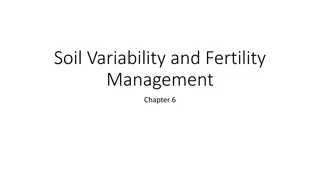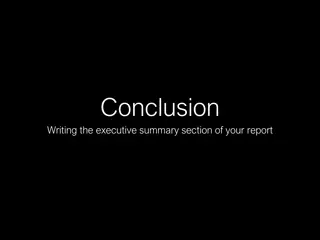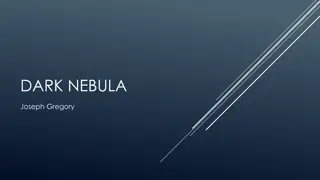Understanding the Stellar Initial Mass Function Variability
Investigating the universality of the stellar initial mass function (IMF) through template fitting and updated star-forming main sequence studies. Variable IMF models, template fitting with SED templates, and implications for star formation processes are discussed, highlighting the interplay between gas temperature and radiation effects on IMF variations.
Download Presentation

Please find below an Image/Link to download the presentation.
The content on the website is provided AS IS for your information and personal use only. It may not be sold, licensed, or shared on other websites without obtaining consent from the author. Download presentation by click this link. If you encounter any issues during the download, it is possible that the publisher has removed the file from their server.
E N D
Presentation Transcript
Is the stellar initial mass function universal? I. Template Fitting II. Updated SFMS III. Mass growth & Quiescence C Steinhardt, A Jermyn, A Sneppen, H Hensley, B Mostafa, J Weaver & COSMOS Team
Variable IMF Kroupa IMF (2001): ? 0.3, ? 1.3, ? 2.3, ? < ?1 ?1< ? < ?2 ? > ?2 ? ? = ?1= 0.08? (fragmentation) ?2= 0.5? (collapse) [Jermyn+2018] 2 ?? ?0 ?? - gas temperature (referred to as ????) ?0 - reference MW temperature (20 K; Schnee+2008) ?1= 0.08? 2 ?? ?0 ?2= 0.5? ? ? ? 2.35 ? 1.3 ? ?3.5 2
Template Fitting 1. Produce SED templates (FSPS; Conroy+2009; Conroy & Gunn 2010) 1.3 & 20 Gyr-old galaxies SEDs at 20? < ????< 50? 3
Template Fitting 1. Produce SED templates (FSPS; Conroy+2009; Conroy & Gunn 2010) 1.3 & 20 Gyr-old galaxies SEDs at 20? < ????< 50? 2. Reduce, redshift and fit templates 35 bands from COSMOS2015 (Laigle+2016). NNMF 560 12 (EAZY; Brammer+2008) 4
Best-fit ???? Compared to ????= 20? (i.e. Kroupa): Best fit at any ? bottom-lighter (top-heavier) IMF Highest ? galaxies less bottom-light IMF (???? 25 K) Most star-forming gals have ???? 30 40 ? 5
Best-fit ???? Compared to ????= 20? (i.e. Kroupa): Best fit at any ? bottom-lighter (top-heavier) IMF Highest ? galaxies less bottom-light IMF (???? 25 K) Most star-forming gals have ???? 30 40 ? 6
Best-fit ???? Compared to ????= 20? (i.e. Kroupa): Best fit at any ? bottom-lighter (top-heavier) IMF Highest ? galaxies less bottom-light IMF (???? 25 K) Most star-forming gals have ???? 30 40 ? Two mechanisms or one? Interplay between gas temp and stellar/cosmic radiation? (Maybe no; Steinhardt+2020) ISM is responsible (e.g., iron vs. carbon dust)? 7
Implications: Star Forming Main Sequence Best fits from Speagle+2014 (? ) SFR and ? need to be re-evaluated. High ??? ? high ???? High ? ??? low ???? 8
Implications: Star Forming Main Sequence Best fits from Speagle+2014 Magnelli+2014 SFR and ? need to be re-evaluated. High ??? ? high ???? High ? ??? low ???? Similar pattern with ????? 9
Implications: Quiescent Galaxies Compared to the existing SMFs (Davidzon+2017; Ilbert+2013): ? range is lower (????> 20 K), esp. for SF galaxies Quiescent galaxies are selected as low ???? Clear, as opposed to scale-preferred downsizing Interestingly, simple ? cut can separates 80- 85% of galaxies accurately. Davidzon+2017 Steinhardt+2021 (in prep.) 10
Implications: Quiescent Galaxies Compared to the existing SMFs (Davidzon+2017; Ilbert+2013): ? range is lower (????> 20 K), esp. for SF galaxies Quiescent galaxies are selected as low ???? Clear, as opposed to scale-preferred downsizing Interestingly, simple ? cut can separates 80- 85% of galaxies accurately. Davidzon+2017 Steinhardt+2021 (in prep.) 11
Final Notes Ongoing work with COSMOS2020 (deeper, more bands; Weaver+2021, submitted): Consistency check (+ new detections at ? > 2). Can we use ???? 25 ? blue galaxies to probe ongoing quenching (start at low z)? Test existing galaxy evolution models to reproduce ???? sequence. Hints at the mechanism(s) driving galaxies into two characteristic ????? Relevant to BUFFALO work at high redshift. 12






